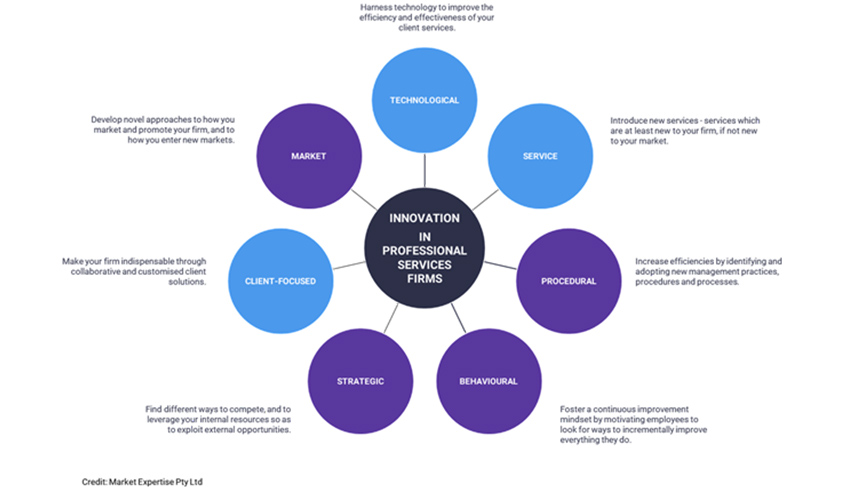The professional services sector has always been competitive. Still, it is difficult to point to a moment in history when external forces placed as intense a level of pressure on firms as they do today, writes Jacqueline (Jaci) Burns.

Forget the ‘Big Bang’ theory
In a professional services environment, innovation is what can differentiate one firm from the rest, allow a firm to command a price premium, make one firm more profitable than the rest, strengthen client loyalty, and allow a firm to attain and maintain a competitive advantage.
Yet, many professional services firms struggle to understand what innovation is, or how it applies to them.
Most are under the misguided view that innovation must be disruptive. It rarely is.
In professional services environments, there are seven dimensions of innovation (see below diagram).
Each of these dimensions is either internally- or externally-focused.
Behavioural innovation is achieved when a firm creates a culture which embraces new ideas and encourages employees to seek out new and improved ways of performing even the most menial of tasks.
Critically, behavioural innovation permits failure.
Process innovation aids organisational efficiency through the adoption of non-technology-based new and best practice processes, procedures and techniques. It can be driven by quality, compliance and regulatory demands, as well as being a reaction to declining margins.
These two dimensions, though less sexy than others, are the key to continuous improvement. They will make your business more efficient, and your people more productive.
Jacqueline (Jaci) Burns is a chief marketing officer at Market Expertise.